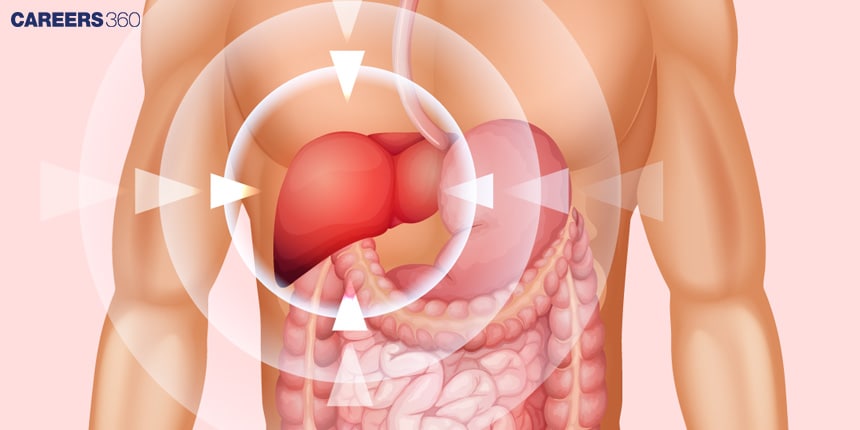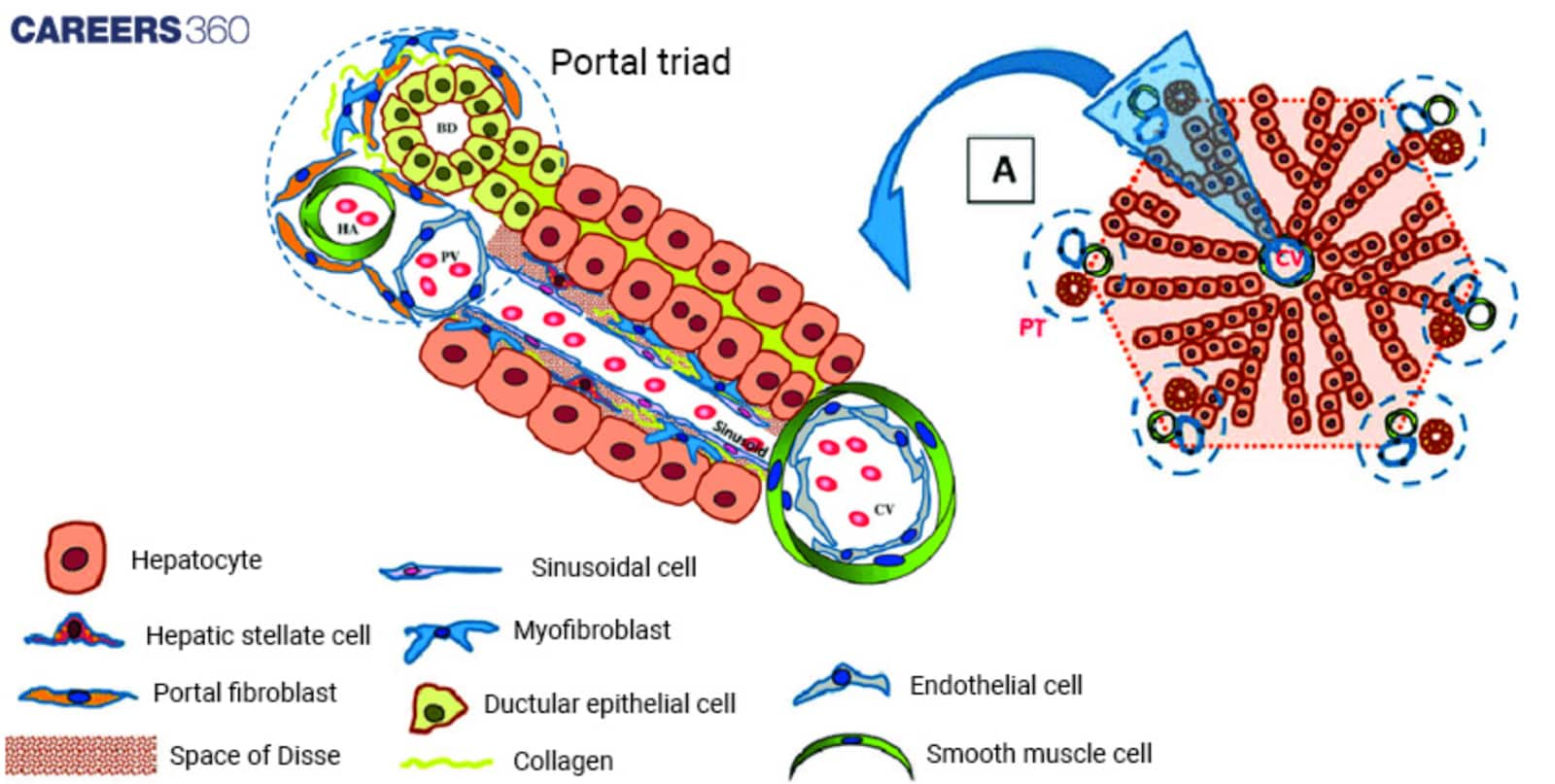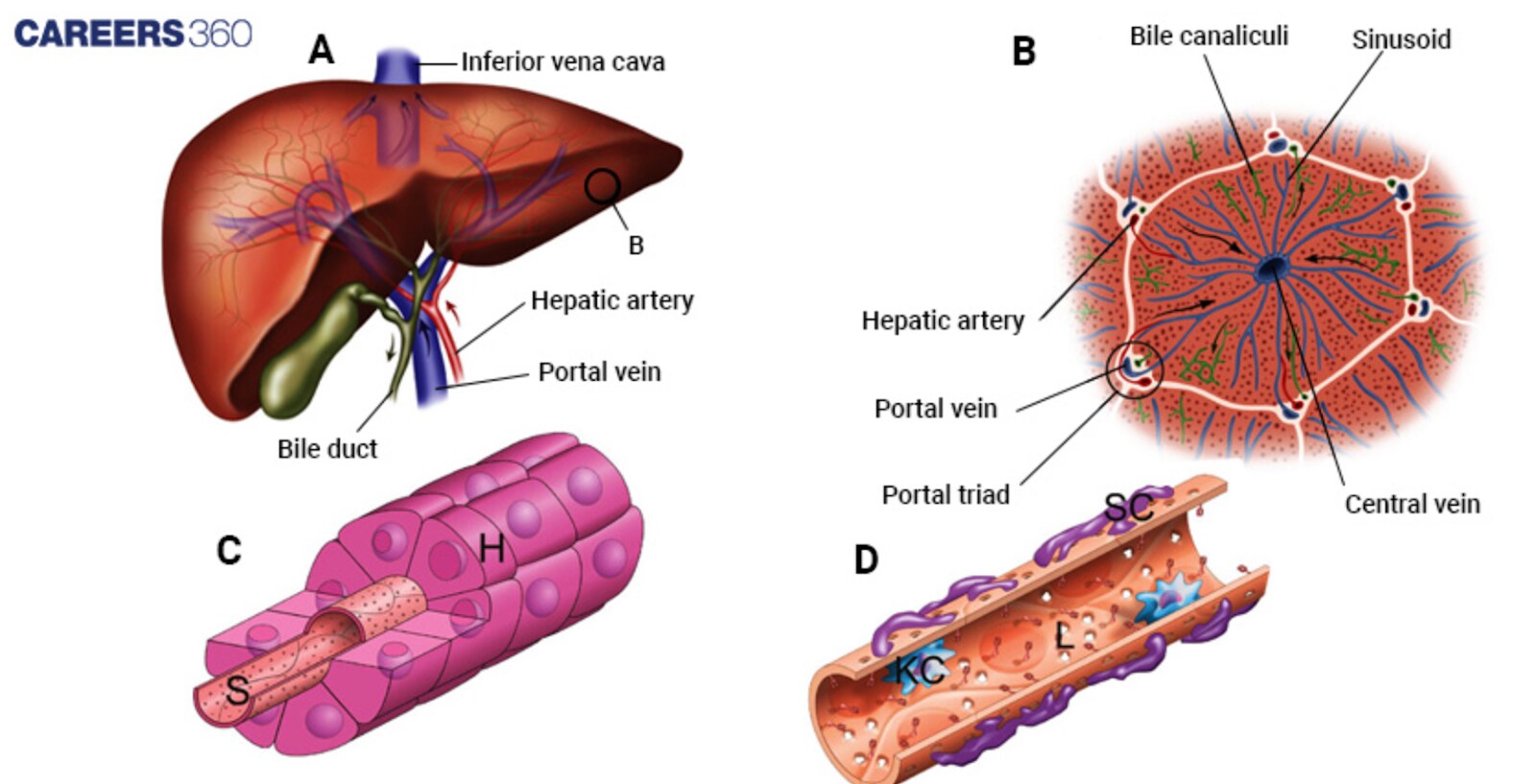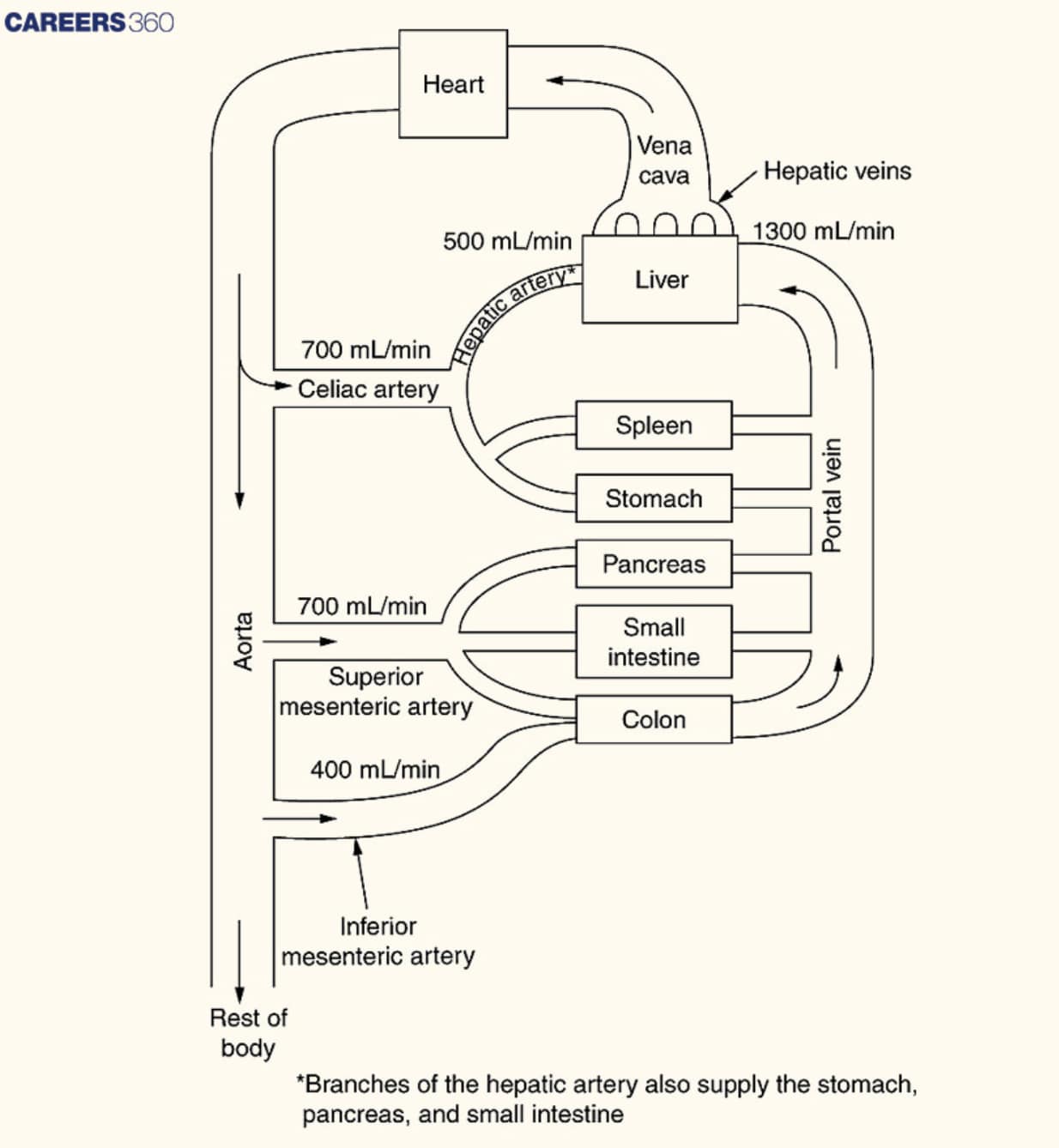Liver: Diagram and Facts with Detailed Explanations
The liver is one of the essential organs in the human body, which performs very many essential functions, including detoxification, metabolism, and production of bile. Regulation of blood sugar levels, storage of nutrients, and disruption of fats are other functions it offers. It is the largest internal organ located in the right upper abdomen, and it is very highly capable of regenerating itself. In this article, liver anatomy, liver functions, cellular organization of the liver, blood supply to the liver, common disorders of the liver, and health and maintenance of the liver are discussed. Liver is a topic of the chapter Digestion and Absorption in Biology.
NEET 2025: Mock Test Series | Syllabus | High Scoring Topics | PYQs
NEET Important PYQ's Subject wise: Physics | Chemistry | Biology
New: Meet Careers360 B.Tech/NEET Experts in your City | Book your Seat now
- Liver Anatomy
- Liver Functions
- Cellular Organization of the Liver
- Blood Supply to the Liver
- Common Disorders of the Liver
- Health and Maintenance of the Liver

Liver Anatomy
It is a reddish-brown organ located in the upper right quadrant of the abdomen, just below the diaphragm. The organ's weight in adults is about 1.5 kg and is famous for its regenerating capacity. The liver's anatomy is, in other words, divided into two major parts: the right lobes and the left lobes. Further, each lobe continues to be subdivided into smaller liver lobules; hence, they are the functional units of the organ.
Liver Diagram
A simple liver diagram in human body is given below-
.jpg)
Liver Functions
There are scores of functions that go on in this organ related to the sustenance of good health. Other things it includes are the metabolism of the body with energy production regarding carbohydrates, proteins, and fats taken into the diet. The liver focuses on the detoxification of substances detrimental to health like alcohol and drugs, and the filtration of blood waste.
Protein Synthesis and Blood Clotting: Proteins important for blood coagulation and functions in the body are synthesized in the liver.
Vitamins and Minerals: Some major important vitamins and minerals like A and D, along with others, are stored in the liver, mostly fat-soluble, Vitamins, including E and K. Iron and copper metals, are stored in the liver along with B12.
Manufacture of Bile: Manufactures bile, so it is an important organ in the process of digestion as well as the absorption of fats.
Also Read-
Cellular Organization of the Liver
Generally, the anatomical organization of the liver occupies various kinds of cells that perform their roles in their aspect. Some of those are:
Hepatocytes: Hepatocytes are the main functional cells of the liver responsible for most of the metabolic, detoxification, and synthetic activities.
Kupffer Cells: These are specialized macrophages for the breakdown of old red blood cells and clearing up foreign microorganisms.
Stellate Cells: These are the storing cells for vitamin A and are also involved in the process of hepatic fibrosis.
Sinusoidal Endothelial Cells: These are cells forming the lining of liver sinusoids serving to exchange the substances from the blood to the cells in the liver.

Blood Supply to the Liver
The liver has two major sources of blood supply:
Hepatic Artery: Supplies blood to the liver already in an oxygen-enriched form from the heart.
Portal Vein: It receives some nutrient-enriched blood from the digestive organs.
Processed, the blood leaves the liver via the hepatic veins and drains into the inferior vena cava.

Liver anatomy: (A) Entire organ and blood supply: blue (venous), red (arterial), green (bile). (B) Liver lobule: hepatocytes radiating from the central vein to the portal triad. (C) Hepatocytes (H) in contact with sinusoid (S). (D) Sinusoidal cell arrangements: L (LSEC), SC (stellate cell), KC (Kupffer cell).

Common Disorders of the Liver
The liver is subject to numerous disorders/diseases: common ones include the following:
Hepatitis: Hepatitis is an inflammation disease on the liver, mostly emanating from infection by some viruses, that is A, B, and C types.
Cirrhosis: This is a long-term effect that leads to the scarring of liver tissue which is usually due to damage caused to the liver by, say, excessive alcohol abuse, or through chronic hepatitis.
Fatty Liver Disease: This is fat accumulating in liver cells and very often arising as a problem consequent to, for instance, obesity or diabetes.
Liver Cancer: Uncontrolled growth of the liver's cells usually by chronic liver diseases
Health and Maintenance of the Liver
This, in turn, requires proper maintenance of the organ for fit and healthy well-being. Here are a few tips on how to keep your liver healthy:
Healthy Diet: Be balanced in diet with fruits, vegetables, whole grains, and lean proteins but in moderation without excess intake of fats and sugars.
Avoid Excessive Alcoholic Drinking: Excess intake of alcohol should be checked to deter damage to the liver organ.
Regular Exercise: Regular exercise will maintain in some respect a healthy weight, which would not be a cause for addition to emerging complications in health.
Vaccinations: Get vaccinated for hepatitis A and B.
Check-Ups: Get your liver function tests and general health checks at regular intervals from the healthcare provider.
Also Read-
Recommended video for Liver
Frequently Asked Questions (FAQs)
Metabolism and energy production; detoxification and filtration; synthesis and storage of proteins; also the synthesis of bile and several vitamins and minerals.
Detox is made by breaking down injurious chemicals, abused drugs, and substances like alcohol, leaving it to filter in case of any kind of waste that possibly could be flown in the blood.
Common symptoms of liver disease include jaundice, which is a yellowing of the skin and eyes, fatigue, abdominal pain and swelling, and dark urine.
Healthy eating, not drinking alcohol in overabundance, being active in a physical way, hepatitis vaccination, and general regular checkups to keep the liver healthy.
Advances in liver treatment would involve stem cell therapies, new ways of liver transplantation compared to earlier times, and new drugs in the market that target a few liver diseases.
Also Read
30 Nov'24 03:25 PM
26 Nov'24 05:38 PM
25 Nov'24 06:43 PM
25 Nov'24 05:45 PM
25 Nov'24 04:48 PM
25 Nov'24 03:52 PM
23 Nov'24 04:30 PM
23 Nov'24 10:03 AM